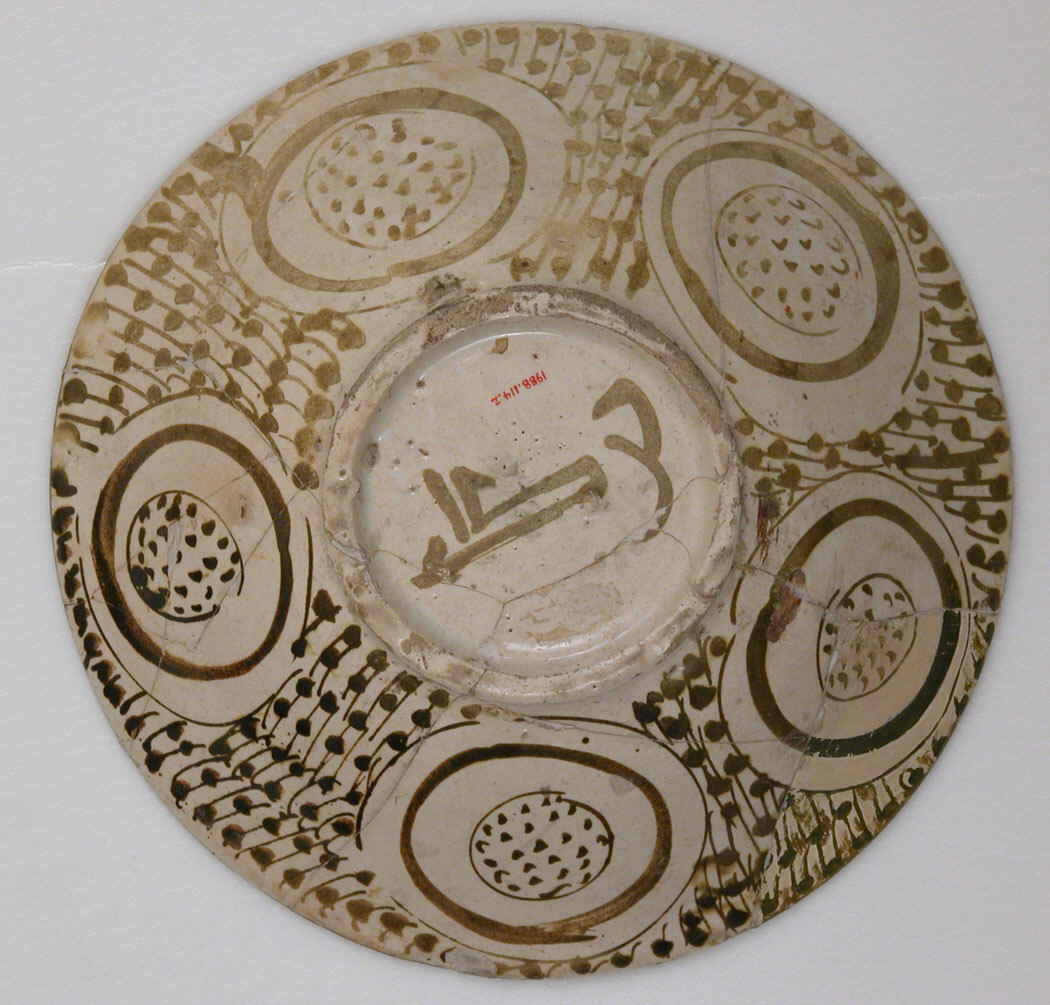Luster Bowl with a Seated Figure and “Baraka” (Blessing) Written Under the Base
Not on view
The figure on this bowl is seated on what appears to be a small chair, perhaps like those found on painted wood that are known from later periods. The long sleeve of her dress, together with the palmette she holds in her hand, suggest that she may be a female performer.
Luster likely elicited a sense of wonder in the viewer, as the metal particles of the paint would have shined and changed color according to the light cast upon them. The Arabic word baraka, or blessing, painted in luster on the bottom of the bowl adds an auspicious quality and enhances the desired everyday experience of handling such vessels, be it in their making, purchasing, gifting, display, or use in serving food.
The luster-technique of painting involves the use of metallic oxides and the firing of the object in a low oxygen kiln. In the first two centuries of its application (ninth–tenth century C.E.) luster is only known to have been produced in Iraq.
Due to rights restrictions, this image cannot be enlarged, viewed at full screen, or downloaded.
This artwork is meant to be viewed from right to left. Scroll left to view more.



